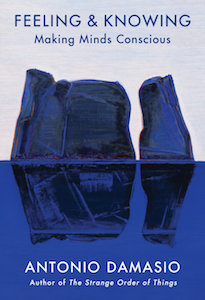
How Do We Make Sense of the Meaning of Consciousness?
Antonio Damasio on the Two Types of Intelligence That Govern Human Beings
It is not possible to make sense of what consciousness is and of how it developed without first addressing a number of important questions in the universe of biology, psychology, and neuroscience. The first of those questions concerns intelligences and minds. We know that the most numerous living organisms on earth are unicellular, such as bacteria. Are they intelligent? Indeed they are, remarkably so. Do they have minds? No, they do not, I believe, and neither do they have consciousness. They are autonomous creatures; they clearly have a form of “cognition” relative to their environment, and yet, instead of depending on minds and consciousness, they rely on non-explicit competences—based on molecular and sub-molecular processes—that govern their lives efficiently according to the dictates of homeostasis.
And what about humans? Do we have minds and only minds? The simple answer is no. We certainly have minds, populated by patterned sensory representations called images, and we also have the non-explicit competences that serve simpler organisms so well. We are governed by two types of intelligence, relying on two kinds of cognition. The first is the one humans have long studied and cherished. It is based on reasoning and creativity and depends on the manipulation of explicit patterns of information known as images. The second type is the non-explicit competence found in bacteria, the one variety of intelligence on which most lives on earth have depended and continue to depend. It remains hidden to mental inspection.
Feelings are not conventional perceptions of the body but rather hybrids, at home in both body and brain.
The second question we need to address deals with the ability to feel. How are we able to feel pleasure and pain, well-being and sickness, happiness and sadness? The traditional answer is well known: the brain allows us to feel, and all we need is to investigate the specific mechanisms behind specific feelings. My aim, however, is not to elucidate the chemical or neural correlates of one particular feeling or another, an important issue that neurobiology has been attempting to address with some success. My aim is different. I wish to know about the functional mechanisms that allow us to experience in mind a process that clearly takes place in the physical realm of the body.
That intriguing pirouette—from physical body to mental experience—is conventionally attributed to the good offices of the brain, specifically to the activity of physical and chemical devices called neurons. Although it is apparent that the nervous system is required to accomplish that remarkable transition, there is no evidence that it does so alone. Moreover, the intriguing pirouette that allows the physical body to harbor mental experiences is regarded by many as impossible to explain.
In an attempt to answer the critical question, I focus on two observations. One of them relates to the unique anatomical and functional features of the interoceptive nervous system—the system responsible for signaling from the body to the brain. These features are radically different from those that can be found in other sensory channels, and although some of them have previously been documented, their significance has been overlooked. And yet they help explain the peculiar melding of “body signals” and “neural signals” that decisively contributes to experiencing the flesh.
Another pertinent observation concerns the equally unique relationship between the body and the nervous system, specifically the fact that the former entirely contains the latter within its borders. The nervous system, including its natural core, the brain, is located in its entirety within the territory of the body proper and is fully conversant with it. As a consequence, body and nervous system can interact directly and abundantly. Nothing comparable holds for the relation between the world external to our organisms and our nervous systems. An astonishing consequence of this peculiar arrangement is that feelings are not conventional perceptions of the body but rather hybrids, at home in both body and brain.
This hybrid condition may help explain why there is a profound distinction but no opposition between feeling and reason, why we are feeling creatures that think and thinking creatures that feel. We go through life feeling or reasoning or both, as required by the circumstances. Human nature benefits from an abundance of explicit and non-explicit types of intelligence and from the use of feeling and reason, each alone or in combination.
Plenty of intellectual power, obviously, though not nearly enough for us to behave decently to our fellow humans, not to mention other living creatures.
Armed with important new facts, we are finally prepared to address consciousness directly. How does the brain provide us with mental experiences that we unequivocally relate to our beings—to ourselves? The possible answers, as we shall see, become disarmingly transparent.
__________________________________

Excerpted from Feeling & Knowing by Antonio Damasio. Copyright © 2021 by Antonio Damasio. Excerpted by permission of Pantheon. All rights reserved. No part of this excerpt may be reproduced or reprinted without permission in writing from the publisher.
Antonio Damasio
Antonio Damasio is University Professor, David Dornsife Professor of Neuroscience, Psychology, and Philosophy, and director of the Brain and Creativity Institute at the University of Southern California, Los Angeles. Awards he has received include the Prince of Asturias Prize in Science and Technology, the Grawemeyer Award, the Honda Prize, and the Pessoa and Signoret prizes.



















